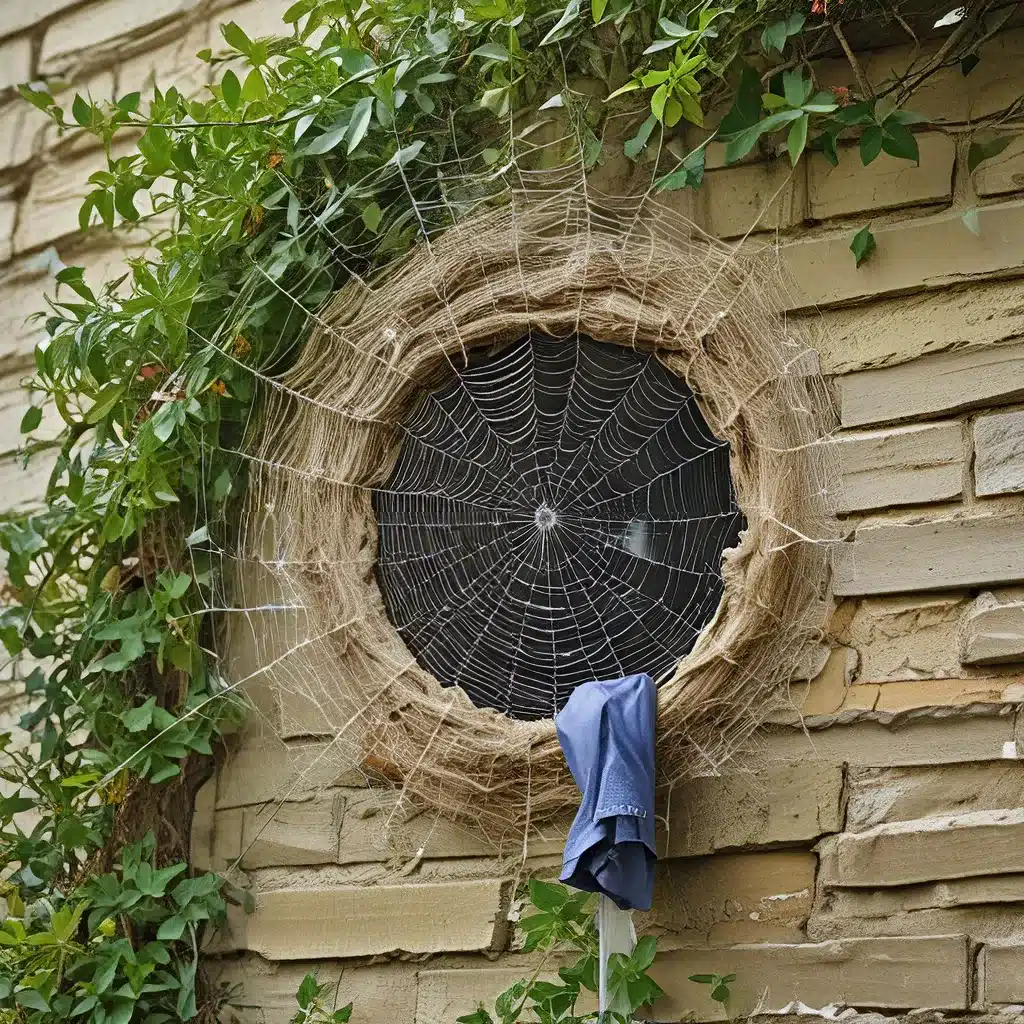Ah, the dreaded spiderwebs – they can turn even the tidiest of homes into a creepy, cobweb-covered haven for our eight-legged friends. Whether it’s those delicate strands clinging to the corners of your windows or the thick, matted nests in the attic, these arachnid abodes can be a real pain to deal with. But fear not, my fellow web-wary homeowners! I’m here to share my foolproof tips for safely and effectively removing those pesky spiderwebs and nests without turning your living space into a scene straight out of a horror movie.
Understanding Spiders and Their Webs
Let’s start with the basics – what’s really going on when those sticky, silk-like strands start popping up around your home? Spiders are fascinating creatures, and they build their webs for a variety of reasons, from catching prey to claiming territory. While they may seem like a nuisance, it’s important to remember that spiders play a crucial role in the ecosystem, helping to control insect populations and providing food for other animals.
According to experts, spiders typically build their webs in undisturbed, quiet areas where they can easily catch flying insects. This means you’re more likely to find them in corners, crevices, and other out-of-the-way spots around your home. And those webs? They’re made from a specialized silk that the spiders produce, which is remarkably strong and durable.
Safely Removing Spiderwebs
Now, let’s dive into the fun part – getting rid of those pesky webs! The key here is to approach the task carefully and safely. After all, we don’t want to accidentally provoke any eight-legged residents or end up with a face full of web.
First and foremost, it’s important to use the right tools for the job. A sturdy broom, a vacuum with a hose attachment, or even a simple damp cloth can be great for quickly sweeping away those cobwebs. Just be sure to wear gloves and safety goggles to protect yourself, and work in well-ventilated areas to avoid inhaling any dust or debris.
Some experts also recommend using a spider web brush – a specialized tool with soft bristles that can gently remove webs without damaging them. This can be particularly useful for getting into tight spaces or delicate areas where a broom or cloth might not reach.
And let’s not forget about those tricky, hard-to-reach spots, like the corners of your ceiling or the tops of high shelves. For these areas, a telescoping duster or extension pole can be a real lifesaver, allowing you to access those cobweb-covered nooks and crannies without risking life and limb.
Dealing with Spidernests
But what about those bigger, more established spider nests? These can be a whole different ball game, especially if they’re tucked away in your attic or behind furniture. Approaching a spider nest requires even more caution, as you don’t want to inadvertently disturb the spiders and end up with an angry arachnid army on your hands.
Experts suggest using an insecticide spray specifically formulated for spiders to safely and effectively eliminate any nests you find. Be sure to follow the product instructions carefully, and always wear protective equipment like gloves and a mask. It’s also a good idea to ventilate the area thoroughly before and after the treatment to avoid any potential health hazards.
And if you’re dealing with a particularly stubborn or hard-to-reach nest, it might be worth considering professional pest control services. These experts have the tools, training, and experience to tackle even the most daunting spider infestations, ensuring that your home is free of cobwebs and well-protected from future arachnid invasions.
Preventing Future Spiderwebs
Of course, the best way to deal with spiderwebs is to prevent them from appearing in the first place. This means regularly inspecting your home for any potential entry points or nesting spots, and taking proactive measures to keep those eight-legged freeloaders at bay.
Regularly cleaning and dusting your home is a great start, as it removes the debris and hideaways that spiders love. You can also try sealing any cracks or crevices around windows, doors, and other potential access points to make your home less appealing to these web-spinning squatters.
And don’t forget about the landscaping around your home! Keeping your yard well-maintained, with trimmed hedges and minimal piles of leaves or wood, can go a long way in deterring spiders from making themselves at home in the first place.
Embracing the Arachnid Ambiance (Safely)
Now, I know what you’re thinking – “But wait, don’t spiders have a purpose? Aren’t they important for the ecosystem?” You’re absolutely right, my friend. Spiders play a vital role in the natural world, and it’s important to respect their place in the grand scheme of things.
That’s why I always recommend exploring non-toxic, eco-friendly methods of spider removal whenever possible. Natural repellents, like essential oils or vinegar-based solutions, can be an effective and cruelty-free way to keep those eight-legged freeloaders at bay. And if you do come across a spider web, consider carefully removing it and relocating the spider to a more suitable location, rather than simply wiping it away.
After all, spiders are fascinating creatures, and there’s something to be said for the intricate beauty of their webs. So, why not embrace the arachnid ambiance in your home – just, you know, in a way that keeps you and your family safe and comfortable.
In the end, dealing with spiderwebs and nests is all about finding the right balance – keeping your living space clean and pest-free, while also respecting the important role that spiders play in our world. With a little bit of know-how, the right tools, and a healthy dose of caution, you can say goodbye to those pesky cobwebs for good.
And if you’re ever in need of a professional cleaning service to help tackle those tricky spider situations, be sure to check out Adam Cleaning – they’ve got your back when it comes to keeping your home spider-free and sparkling clean.







